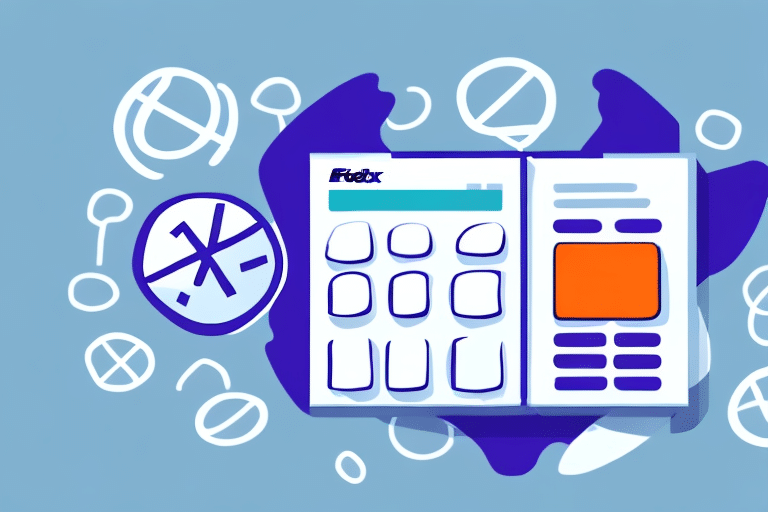How to Use the FedEx Dimensional Weight Calculator
If you're a frequent shipper or an online seller, understanding the accurate weight and dimensions of your packages is crucial. The FedEx Dimensional Weight Calculator is an essential tool that helps determine shipping costs based on the size and weight of your package. This guide provides a step-by-step walkthrough on using the calculator, offers tips for precise measurements, and discusses strategies to optimize your shipping for maximum savings.
What is the FedEx Dimensional Weight Calculator?
The FedEx Dimensional Weight Calculator helps you calculate the shipping cost of your package by considering both its size and weight. The formula used to determine "dimensional weight" is:
Dimensional Weight = (Length × Width × Height) / 139
The result is compared to the actual weight of the package, and the greater of the two is used to calculate the shipping cost.
Using this calculator ensures that you are accurately charged based on your package's space utilization, which is particularly important for businesses shipping large or bulky items. According to FedEx, optimizing dimensional weight can reduce shipping costs by up to 30% for certain shipments.
It's important to remember that the Dimensional Weight Calculator is one part of estimating shipping costs. Factors like destination, shipping speed, and additional services may also influence the final price.
Why is the FedEx Dimensional Weight Calculator Important?
Traditionally, shipping costs were based solely on the actual weight of the package. However, with the rise of eCommerce, many businesses began shipping oversized, lightweight packages that occupied valuable space on transport vehicles. To address this, carriers like FedEx introduced dimensional weight pricing, which takes into account the package's volume.
Dimensional weight pricing ensures that shipping costs reflect both the size and weight of packages, promoting more efficient use of cargo space. By using the FedEx Dimensional Weight Calculator, businesses can:
- Ensure accurate shipping cost calculations
- Avoid overpaying for shipping oversized packages
- Optimize packaging to reduce shipping expenses
Additionally, accurate dimensional weight calculations help prevent unexpected fees or surcharges, allowing for better financial planning and customer pricing strategies.
How Does the FedEx Dimensional Weight Calculator Work?
The FedEx Dimensional Weight Calculator is user-friendly and operates based on a standard formula. Here's how it works:
- Input Dimensions: Enter the length, width, and height of your package in inches.
- Calculate Volume: Multiply these dimensions to get the total cubic inches.
- Determine Dimensional Weight: Divide the total cubic inches by 139 to obtain the dimensional weight in pounds.
- Compare Weights: Weigh your package and compare the actual weight to the dimensional weight.
- Billing: FedEx will charge based on the greater of the two weights.
FedEx applies a minimum billable weight of 1 lb. It's also important to consider the mode of transportation and destination, as international shipments or air freight may have different dimensional weight considerations.
For more detailed information, refer to the FedEx Dimensional Weight page.
Step-by-Step Guide to Using the FedEx Dimensional Weight Calculator
- Measure Your Package: Accurately measure the length, width, and height of your package in inches. Use a ruler or measuring tape for precision.
- Calculate Cubic Inches: Multiply the length by the width by the height to obtain the total cubic inches.
- Determine Dimensional Weight: Divide the total cubic inches by 139 to get the dimensional weight in pounds.
- Weigh Your Package: Use a reliable scale to weigh your package, rounding up to the nearest whole number.
- Compare Weights: The shipping cost will be based on the higher value between the actual weight and the dimensional weight.
- Finalize Shipping: Proceed with the shipping process using the calculated weight to determine the cost.
Accurately calculating dimensional weight helps avoid unexpected shipping fees and ensures that you are utilizing space efficiently. For businesses, this can lead to significant cost savings over time.
Tips for Accurate Measurements
- Measure at Widest Points: Ensure you measure the package at its longest, widest, and tallest points, including any protrusions like handles or wheels.
- Use Consistent Units: Always measure in inches to maintain consistency with FedEx's requirements.
- Round Up: If measurements fall between inches, round up to the nearest whole number to avoid underestimation.
- Double-Check: Verify your measurements to ensure accuracy before inputting them into the calculator.
- Standardize Packaging: Utilize standard box sizes when possible to simplify the measurement process and optimize space utilization.
- Consider Multiple Packages: If shipping several items, measure and calculate each package individually to ensure precise cost estimations.
Common Mistakes to Avoid
Avoiding common errors can save you money and prevent delays. Here are some pitfalls to watch out for:
- Including Packaging Materials: Always account for the size of the packaging materials, not just the product. This ensures dimensional weight is accurately calculated.
- Incorrect Measurements: Measuring only part of the package or excluding protruding elements can lead to incorrect dimensional weight calculations.
- Ignoring Density: Understanding whether your package is being charged by actual or dimensional weight is crucial. Optimize packaging to reduce unnecessary space.
- Not Using the Calculator: Manually estimating shipping costs can result in overpayment. Always use the FedEx Dimensional Weight Calculator for precise calculations.
How to Save Money Using the FedEx Dimensional Weight Calculator
Optimizing your shipping strategy can lead to significant savings. Here are some strategies:
- Optimize Package Size: Use appropriately sized packaging to minimize the dimensional weight. Smaller packages often result in lower shipping costs.
- Consolidate Shipments: Combine multiple orders into a single shipment to reduce the number of packages and take advantage of bulk shipping rates.
- Choose the Right Shipping Option: Select a shipping speed that matches your delivery needs. For non-urgent packages, opting for slower shipping can reduce costs.
- Utilize FedEx Discounts: Take advantage of FedEx’s volume discounts and special promotions. Businesses shipping regularly may qualify for additional savings.
- Efficient Packaging: Use packing materials that protect your items without adding unnecessary bulk. This can help reduce both dimensional and actual weight.
Understanding Dimensional Weight and Its Impact on Shipping Costs
Dimensional weight is a pricing technique that considers the volume of a package in addition to its actual weight. This ensures that shipping companies use cargo space efficiently. For example, a large, lightweight package may cost more to ship than a smaller, heavier one because it occupies more space.
Different carriers may use varying formulas to calculate dimensional weight. It's essential to understand FedEx's specific calculation method to accurately estimate shipping costs. Furthermore, some carriers offer incentives for using smaller packaging or optimizing package dimensions, which can lead to additional savings.
According to industry reports, efficient use of dimensional weight can reduce shipping costs by 15-25% for businesses that frequently ship large or bulky items.
Benefits of Using the FedEx Dimensional Weight Calculator
The FedEx Dimensional Weight Calculator offers numerous advantages for both businesses and individuals:
- Accurate Cost Estimation: Ensures that you are charged correctly based on both size and weight.
- Cost Savings: Helps identify opportunities to reduce shipping costs by optimizing package dimensions.
- Efficiency: Streamlines the shipping process by providing quick and reliable cost calculations.
- Financial Planning: Assists businesses in budgeting and forecasting shipping expenses more accurately.
- Customer Satisfaction: Enables businesses to offer competitive shipping rates to their customers.
Frequently Asked Questions
Is the FedEx Dimensional Weight Calculator accurate?
Yes, the calculator uses FedEx's standardized formula to provide precise dimensional weight calculations based on your package's dimensions and weight.
Does the FedEx Dimensional Weight Calculator apply to international shipments?
Yes, the calculator is applicable to both domestic and international shipments. However, international shipping may involve additional factors like customs fees and varying dimensional weight formulas.
What is the minimum billable weight for FedEx shipments?
The minimum billable weight for FedEx shipments is typically 1 lb. Even if your package weighs less, it will be billed as 1 lb unless the dimensional weight is higher.
Can I use the FedEx Dimensional Weight Calculator for multiple packages?
Yes, you can calculate dimensional weight for each package individually to ensure accurate shipping costs for multiple shipments.
Comparing Different Shipping Options
The FedEx Dimensional Weight Calculator can be used to compare various shipping options offered by FedEx. By inputting your package's dimensions and weight, you can evaluate the cost differences between standard shipping, expedited shipping, and other available methods. This comparison enables you to choose the most cost-effective and suitable shipping option based on your delivery needs.
Tracking Packages with FedEx
Once your package is shipped, you can track its progress using the tracking number provided by FedEx. Visit the FedEx Tracking Tool to receive real-time updates on your package's location and estimated delivery date. This feature is beneficial for both businesses and individuals to monitor their shipments and ensure timely delivery.
Best Practices for Optimizing Your Shipping Strategy
To maximize the benefits of the FedEx Dimensional Weight Calculator, consider the following best practices:
- Minimize Package Size: Use the smallest possible packaging that safely accommodates your items to reduce dimensional weight.
- Choose Appropriate Packaging Materials: Select materials that provide protection without adding unnecessary bulk.
- Consolidate Shipments: Combine multiple orders into a single shipment when feasible to take advantage of bulk shipping rates.
- Regularly Review Shipping Practices: Periodically assess your shipping strategies to identify areas for improvement and cost savings.
- Stay Informed: Keep up-to-date with FedEx's shipping policies, discounts, and promotional offers to leverage available savings.
By implementing these strategies, you can enhance your shipping efficiency, reduce costs, and improve overall business operations.
In conclusion, the FedEx Dimensional Weight Calculator is an invaluable tool for anyone involved in shipping, whether you're a business owner or an individual. By accurately calculating shipping costs based on both size and weight, you can optimize your shipping practices, save money, and ensure efficient delivery of your packages.




















